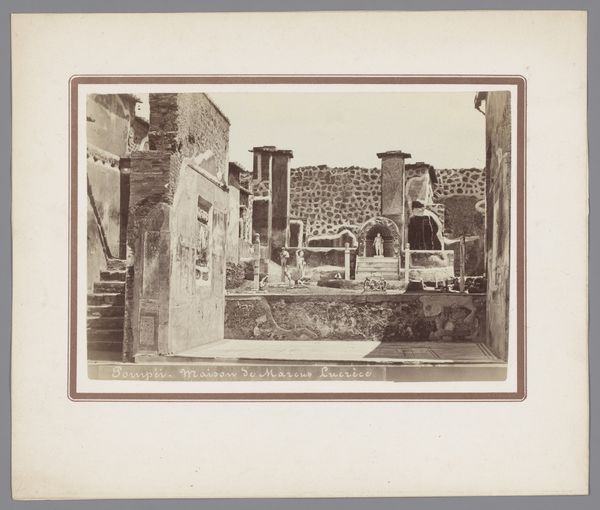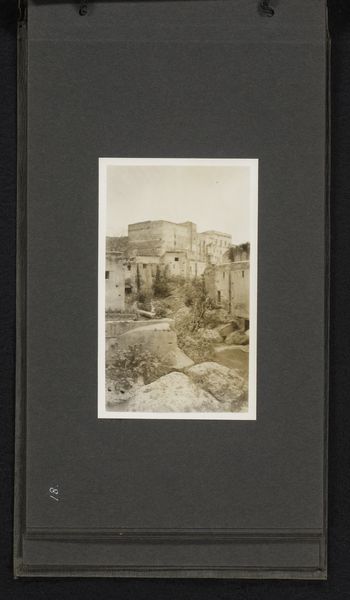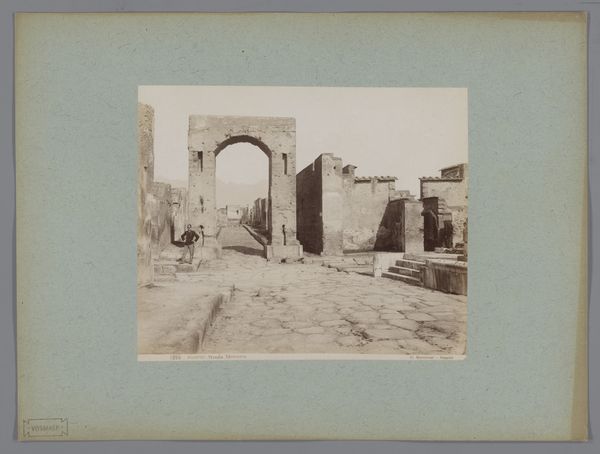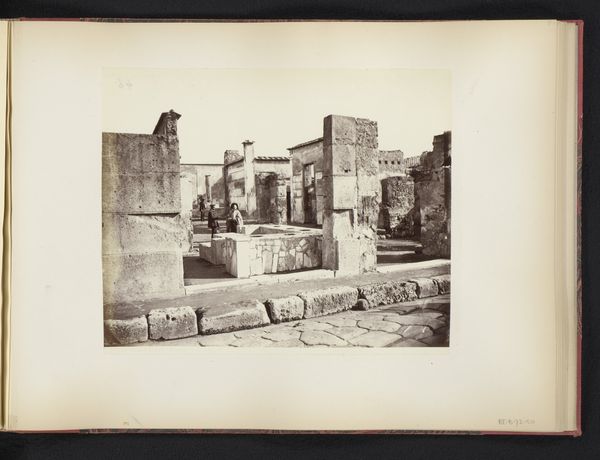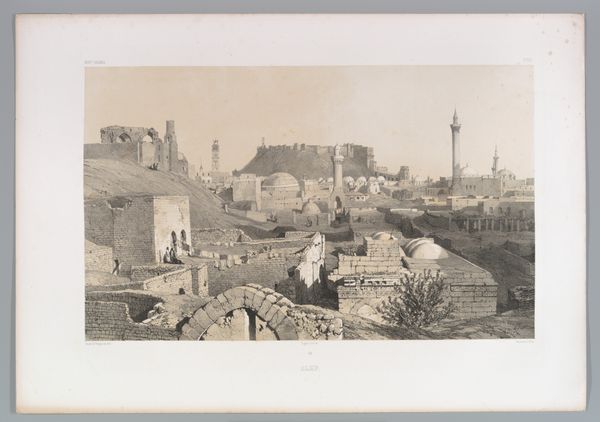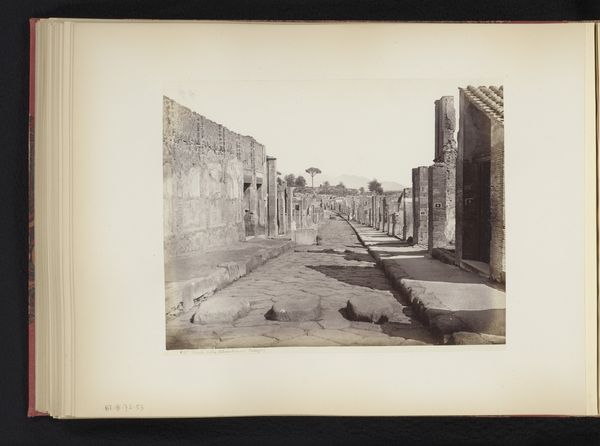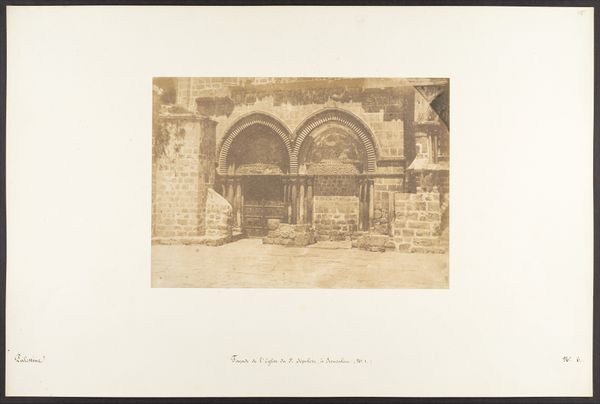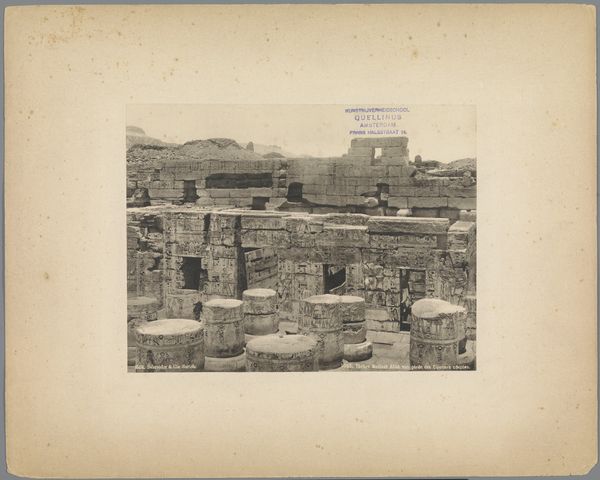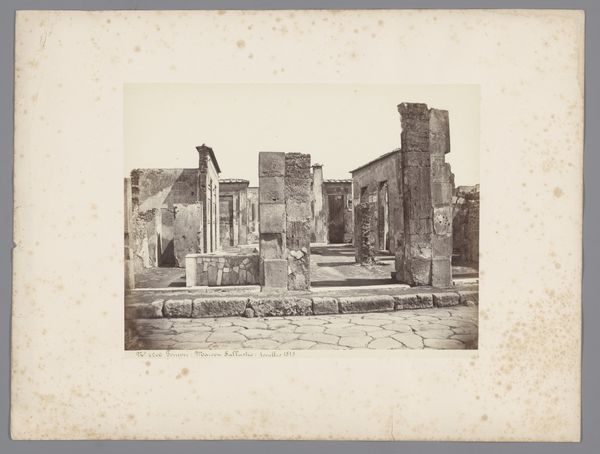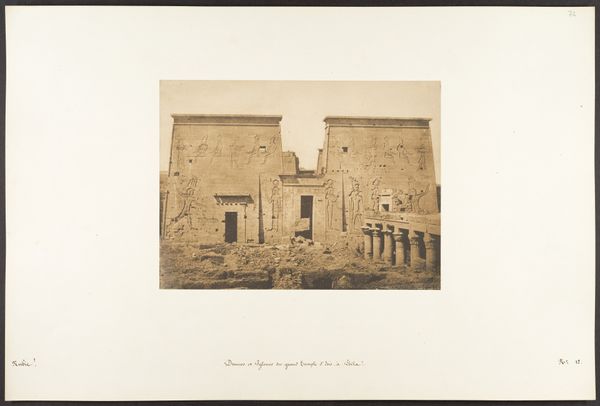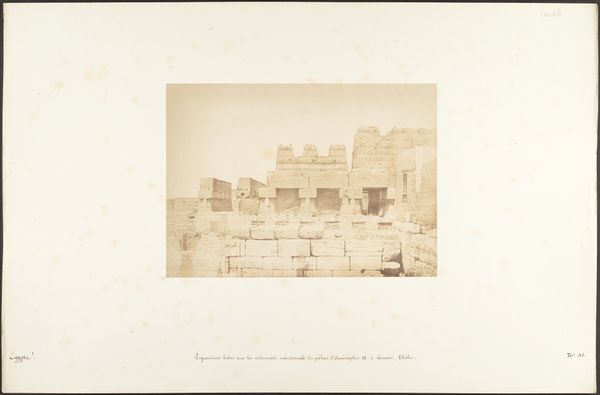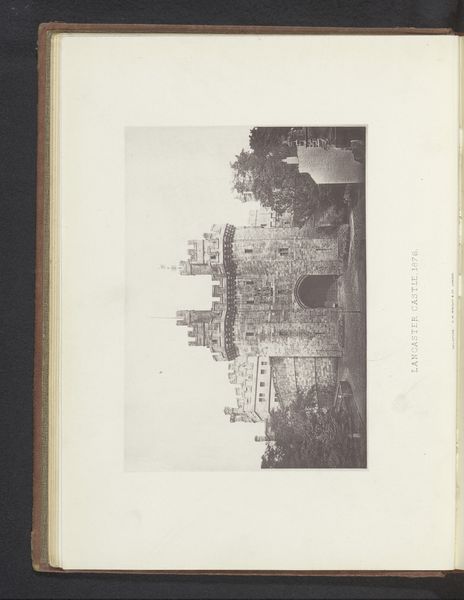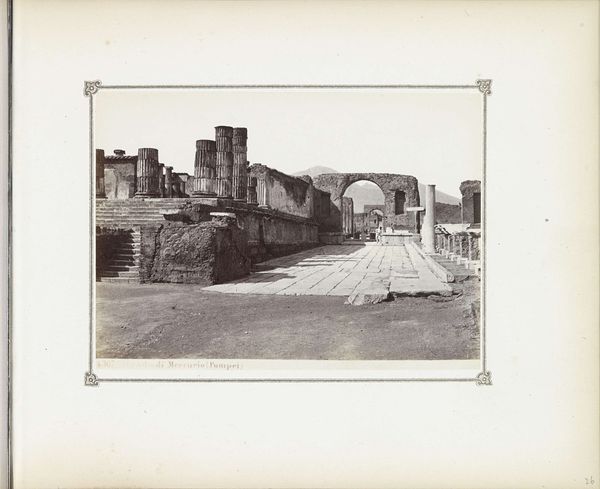
print, photography
# print
#
landscape
#
photography
#
ancient-mediterranean
#
cityscape
#
islamic-art
Dimensions: height 218 mm, width 277 mm
Copyright: Rijks Museum: Open Domain
Editor: So, this photograph, "Torens Phasaël en Hippicus in Jeruzalem" by Félix Bonfils, likely taken between 1867 and 1885, has a stark and imposing quality. It looks like a portrait of ancient power in stone. How would you interpret this work in terms of historical and cultural meaning? Curator: Notice how the stone itself speaks? It carries echoes of crusades, conquests, and co-existence. Bonfils captured more than just a cityscape; he documented a visual palimpsest. The towers Phasaël and Hippicus aren’t merely architectural features, but represent layers of memory, each stone a symbol in a long, evolving narrative. Editor: A narrative... so the choice of towers is not incidental? Curator: Exactly. Think about what towers often symbolize: surveillance, control, but also aspiration, connection to the divine. These structures served as a cultural anchor, long before the photograph itself. Bonfils frames them almost reverentially, imbuing the scene with a weight of history. Editor: The towers do have an imposing presence, maybe they show more than power. They give off an isolating feeling too. Is this an aspect Bonfils captures? Curator: It's plausible. Isolation could reflect the political and social complexities of Jerusalem during that time. The photographer presents us with stone, not stories; form, not people. It subtly reminds us of the distance, the elapsed time. Editor: I hadn't considered the photograph being active, choosing stone over people... I am now really looking closely at the picture, understanding what it may capture beyond its simple depiction. Thanks for the insights! Curator: My pleasure. It's a work that rewards that kind of slow, deliberate viewing. It seems silent, but it speaks volumes, doesn't it?
Comments
No comments
Be the first to comment and join the conversation on the ultimate creative platform.
